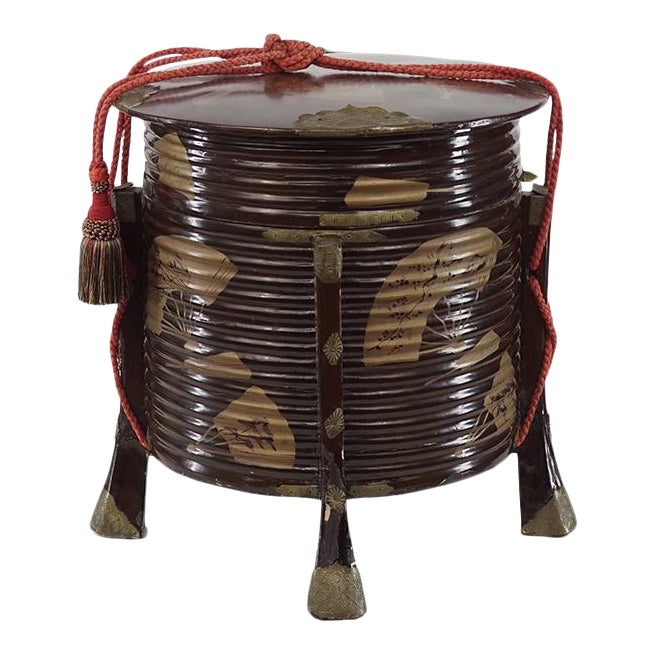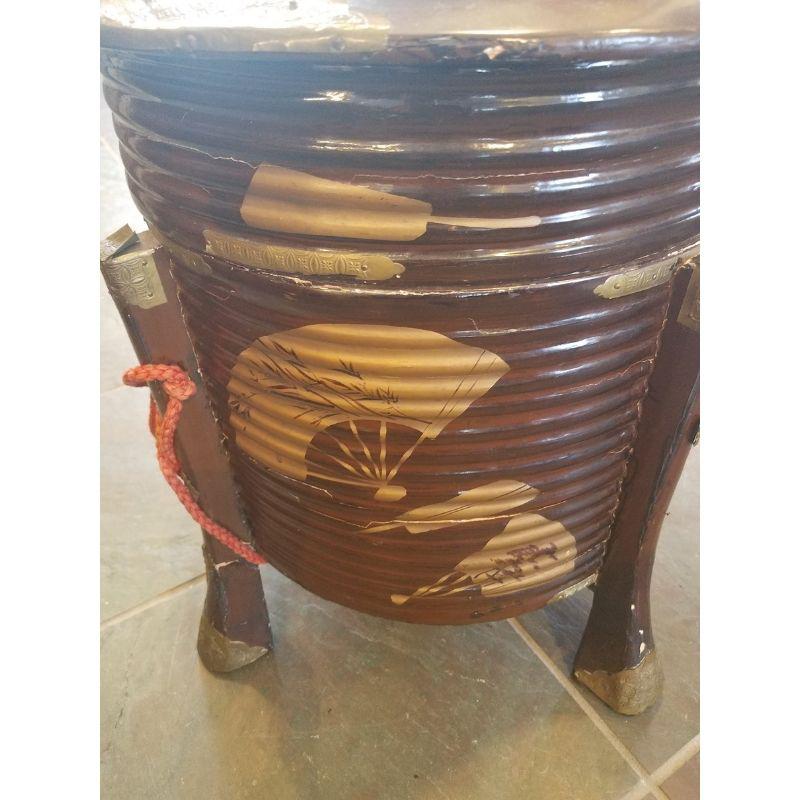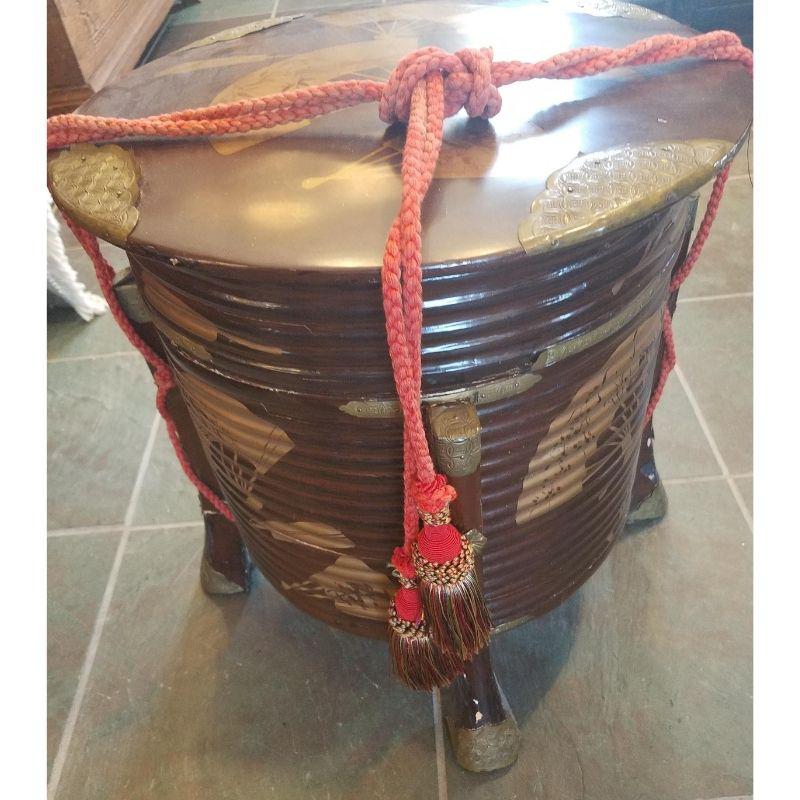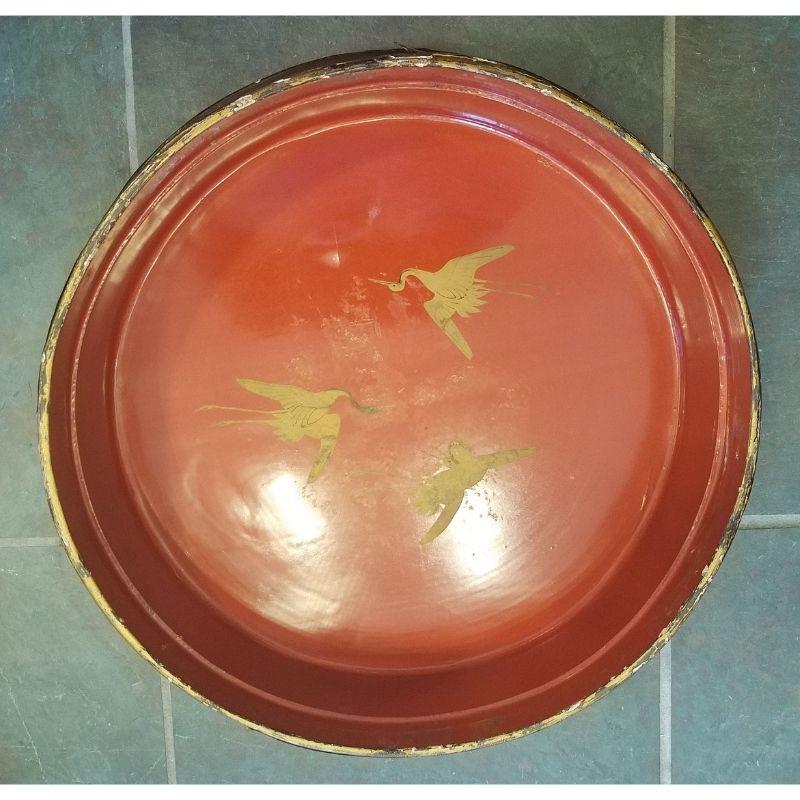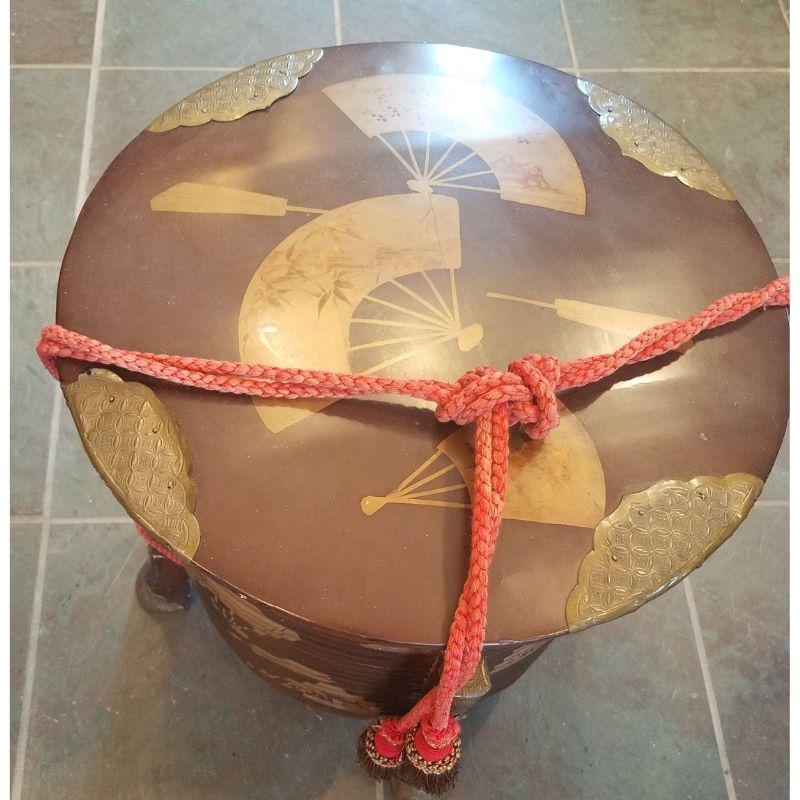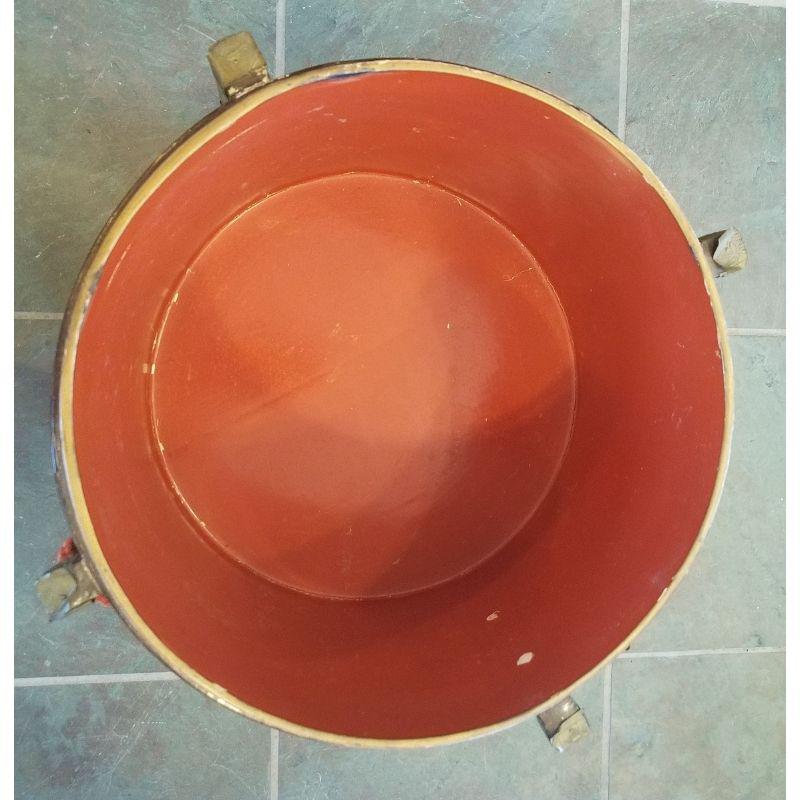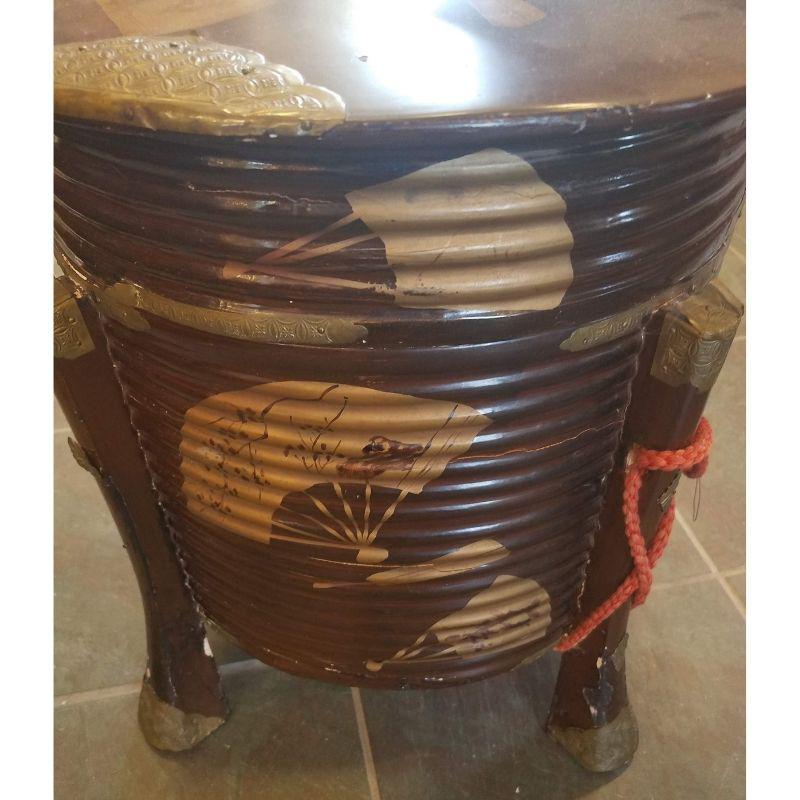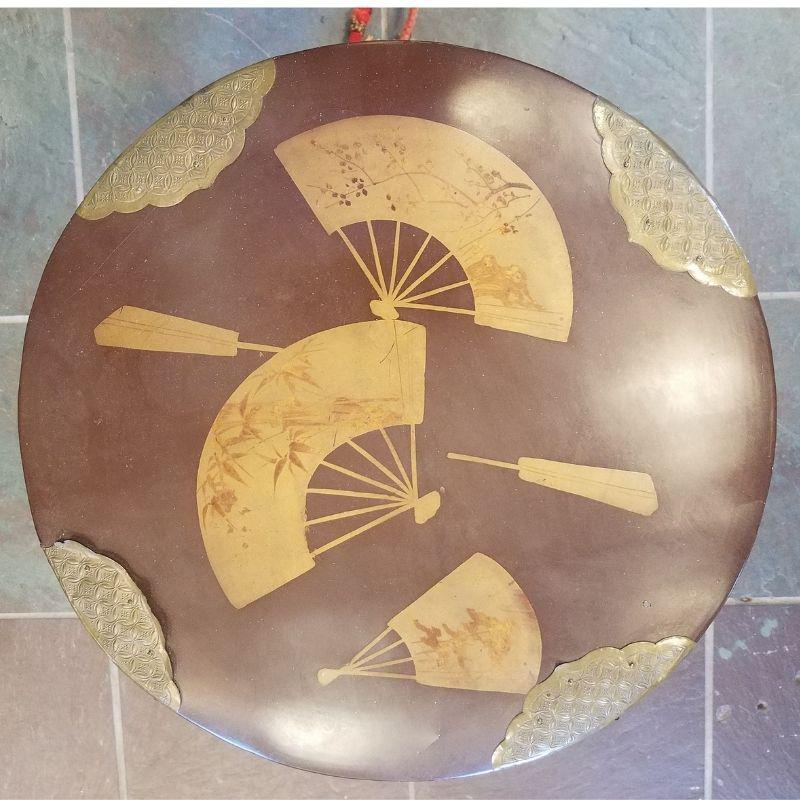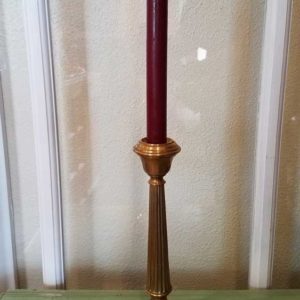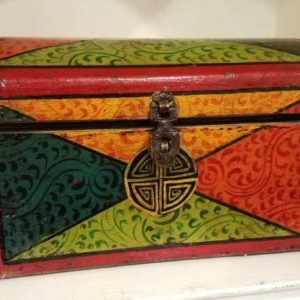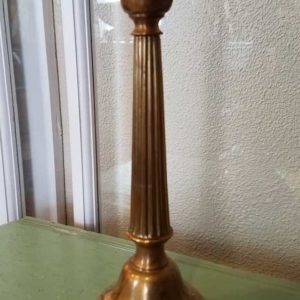Antique Japanese Lacquer Hokkai / Kaioke
$ 249.99
Japanese, Shell-Game Boxes (Kaioke) decorated with lacquered fan decoration and cranes on the interior. Meiji Period, 19th century. Brown lacquer with gold makie on wood, red lacquer interiors, red silk tassels. Used for storing painted shells for the shell matching game (Kaiawase). In this game, two sets of shells, with related or identical scenes from classical Japanese tales, such as The Tale of Genji, were required. One set would be placed face-down in front of the participants. The second set remained in one of the two elegantly decorated lacquer buckets in which the entire sets were stored. Players removed the shells one at a time from the box. They looked at the scene on the shell and attempted to find its mate by turning over one shell from the other set at each turn. The player with the most pairs at the end of the game was declared the winner. This game was invented by courtiers in the Heian period (794-1185) and remained exceptionally popular throughout the Edo period (1615-1868), especially at New Year’s time. Since each shell had only one suitable match, these sets were considered auspicious symbols for newlyweds. Thus, kaiawase sets were often included in the wedding trousseau of high-ranking samurai ladies and aristocrats.
Description
Japanese, Shell-Game Boxes (Kaioke) decorated with lacquered fan decoration and cranes on the interior. Meiji Period, 19th century. Brown lacquer with gold makie on wood, red lacquer interiors, red silk tassels. Used for storing painted shells for the shell matching game (Kaiawase). In this game, two sets of shells, with related or identical scenes from classical Japanese tales, such as The Tale of Genji, were required. One set would be placed face-down in front of the participants. The second set remained in one of the two elegantly decorated lacquer buckets in which the entire sets were stored. Players removed the shells one at a time from the box. They looked at the scene on the shell and attempted to find its mate by turning over one shell from the other set at each turn. The player with the most pairs at the end of the game was declared the winner. This game was invented by courtiers in the Heian period (794-1185) and remained exceptionally popular throughout the Edo period (1615-1868), especially at New Year’s time. Since each shell had only one suitable match, these sets were considered auspicious symbols for newlyweds. Thus, kaiawase sets were often included in the wedding trousseau of high-ranking samurai ladies and aristocrats.
- CONDITION NOTES:
- Condition: The metal mountings are lifted in some spots and a few of the smaller metal embellishments are missing. With scattered cracks to the lacquer overall and some lacquer loss to the legs and feet with restoration attempts at staining the wood underneath. There is some light chipping the lacquer on the interior and some cracking to the lacquer on the interior bottom perimeter

